China's Tianwen-1 Mars probe, which has fulfilled the country's Mars exploration goal of accomplishing orbiting, landing and roving, has spent two years on the red planet.
Dating back to May 15, 2021, a lander, carrying the Zhurong rover, touched down in the southern part of Utopia Planitia, a vast plain in the northern hemisphere of Mars, imprinting the country's first landing on an extraterrestrial planet.
A week later, Zhurong drove down from the landing platform and started exploring the red planet, making China the second country after the United States to land and operate a rover on Mars.
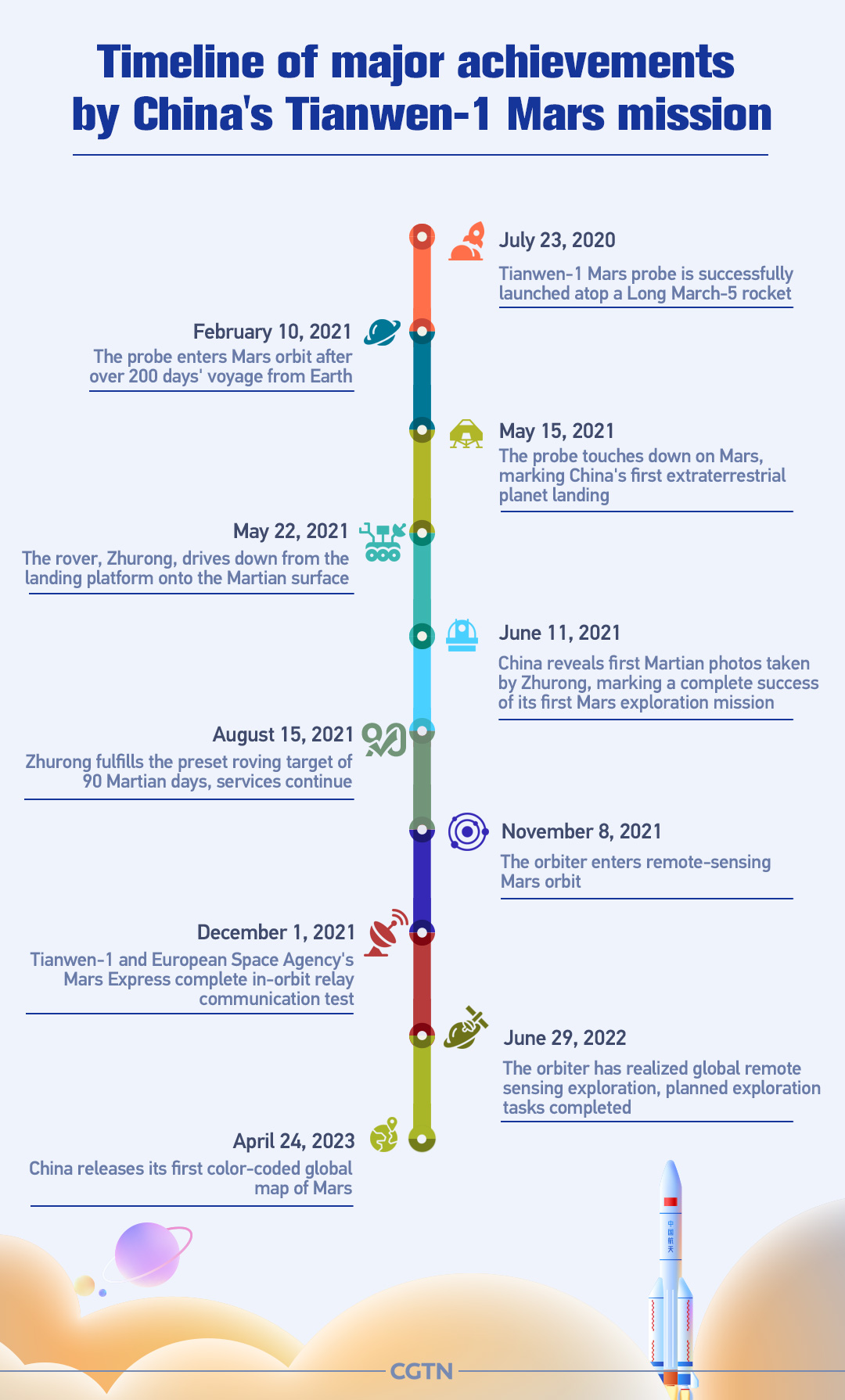
'Firsts' achieved by Tianwen-1 probe
The Tianwen-1 probe, the country's first artificial satellite of Mars, consists of an orbiter, a lander and a rover.
It is the world's first to achieve the three preset tasks in one mission, and has also acquired a large amount of first-hand scientific and engineering data, accumulating valuable experience for China's planetary exploration project.
The probe, before being captured by Martian gravity, snapped the country's first Martian image using the installed high-resolution camera, in which notable Martian features are clearly visible, including Acidalia Planitia, Chryse Planitia, Meridiani Planum, Schiaparelli Crater and a vast canyon system on Mars called Valles Marineris.
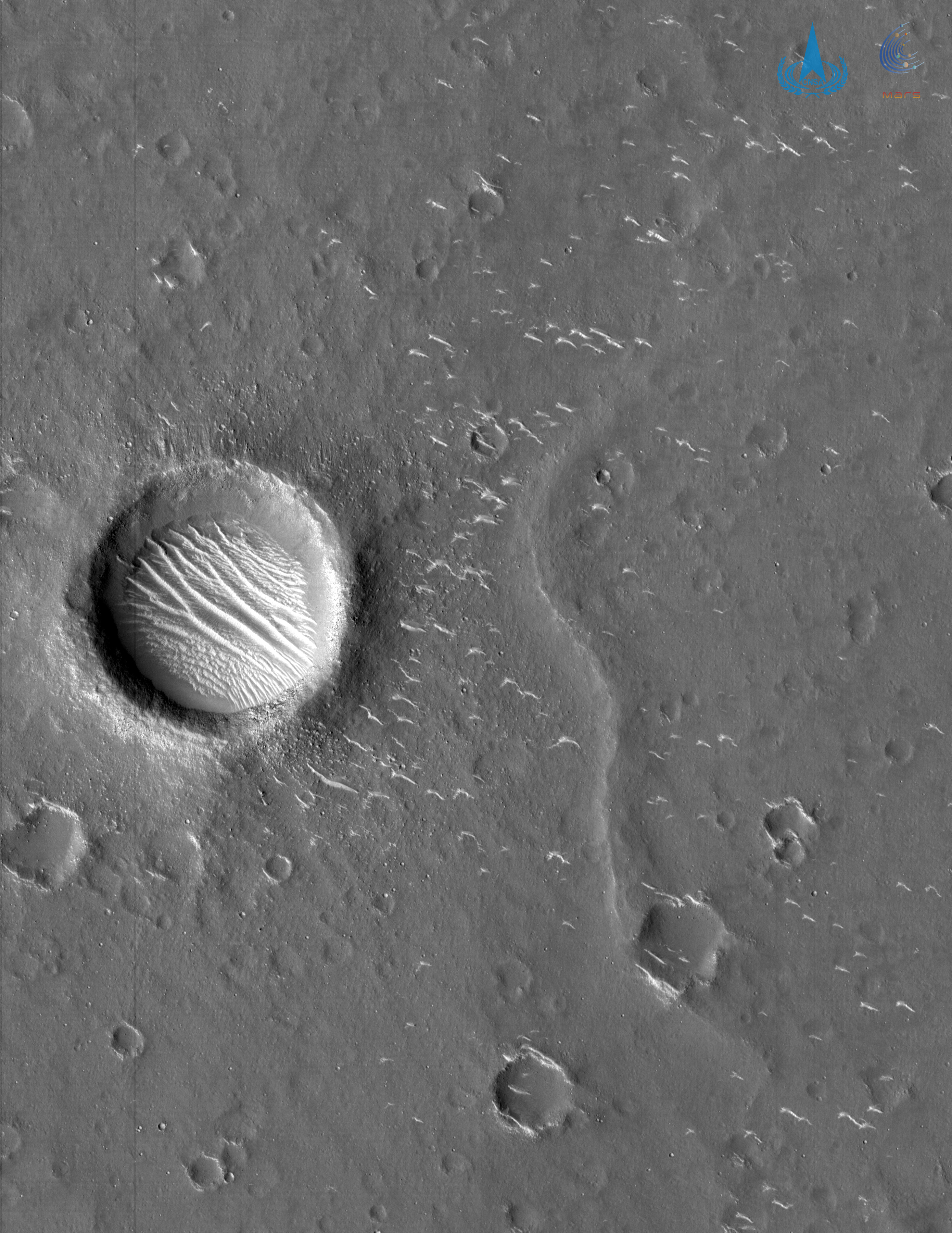
A panchromatic image captured by Tianwen-1. /China National Space Agency
A panchromatic image captured by Tianwen-1. /China National Space Agency
It also relayed China's first high-definition images of the red planet's natural satellite Phobos, which is a small, irregularly shaped object with a mean radius of 11 km that orbits 6,000 km from the Martian surface in a near circular trajectory. It completes an orbit in just 7 hours and 39 minutes.
Most recently, China released its first color-coded global map of Mars along with scientific data obtained by the Tianwen-1 Mars mission.
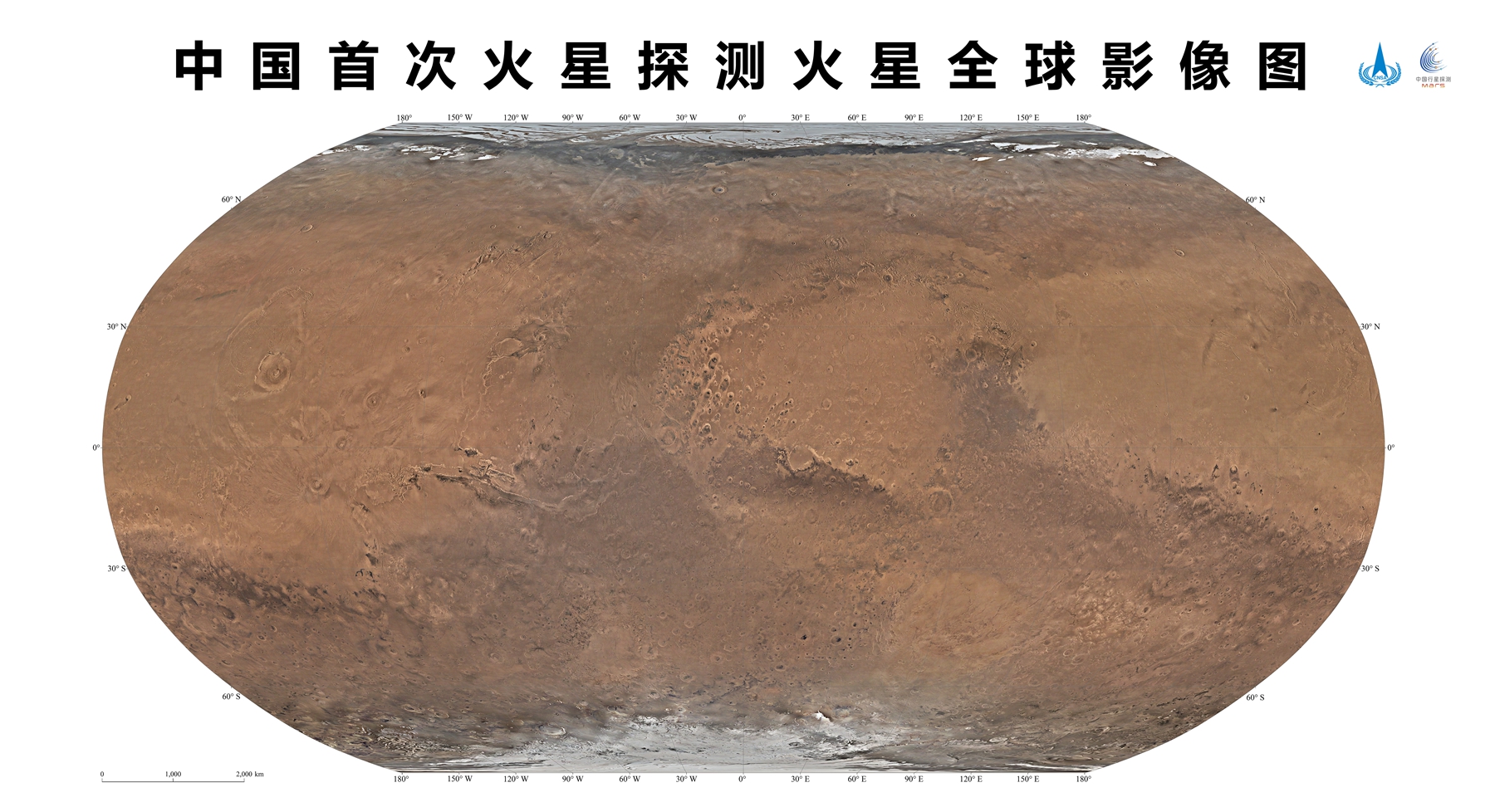
Global map of Mars in Robinson projection. /China National Space Agency
Global map of Mars in Robinson projection. /China National Space Agency
Zhurong rover in hibernation
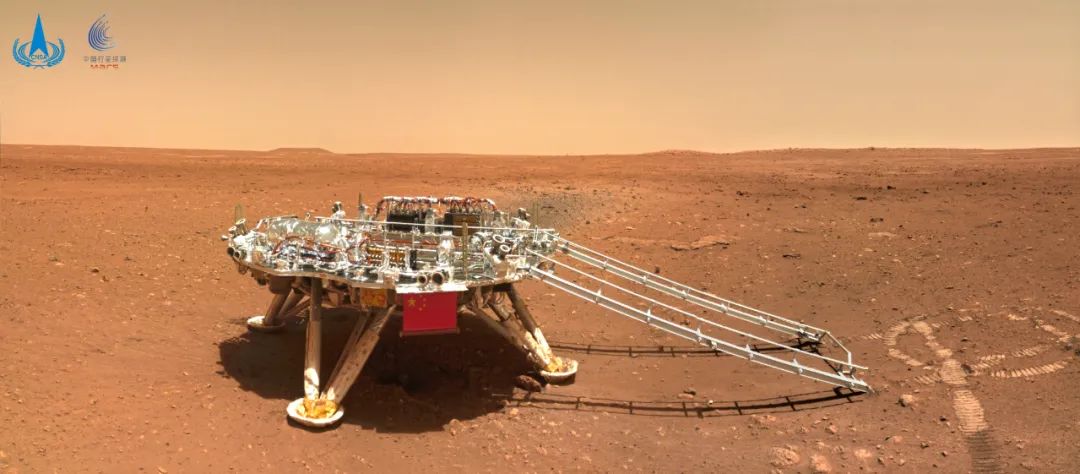
China's Mars rover Zhurong. /China National Space Agency
China's Mars rover Zhurong. /China National Space Agency
With a designed life time of 90 Martian days, the Zhurong rover "went far beyond its assigned work and did a great job" by exploring Mars for 358 Martian days and covering 1,921 meters, said Zhang Rongqiao, chief designer for China's Mars exploration program.
It is now in a dormant state, waiting for proper conditions to wake up – an inside cabin temperature of above minus 15 degrees Celsius, and the minimum daily power consumption of 140 watts generated by the solar power.
Zhang said the most likely cause is "an unpredictable accumulation of Martian dust," which has led to a decrease in the power generation capacity insufficient to wake the Mars rover up.
Given the harsh weather conditions on the planet, Zhang said the rover being inactive now is within the team's expectations as part of the experimental project.
More Tianwen missions to expect
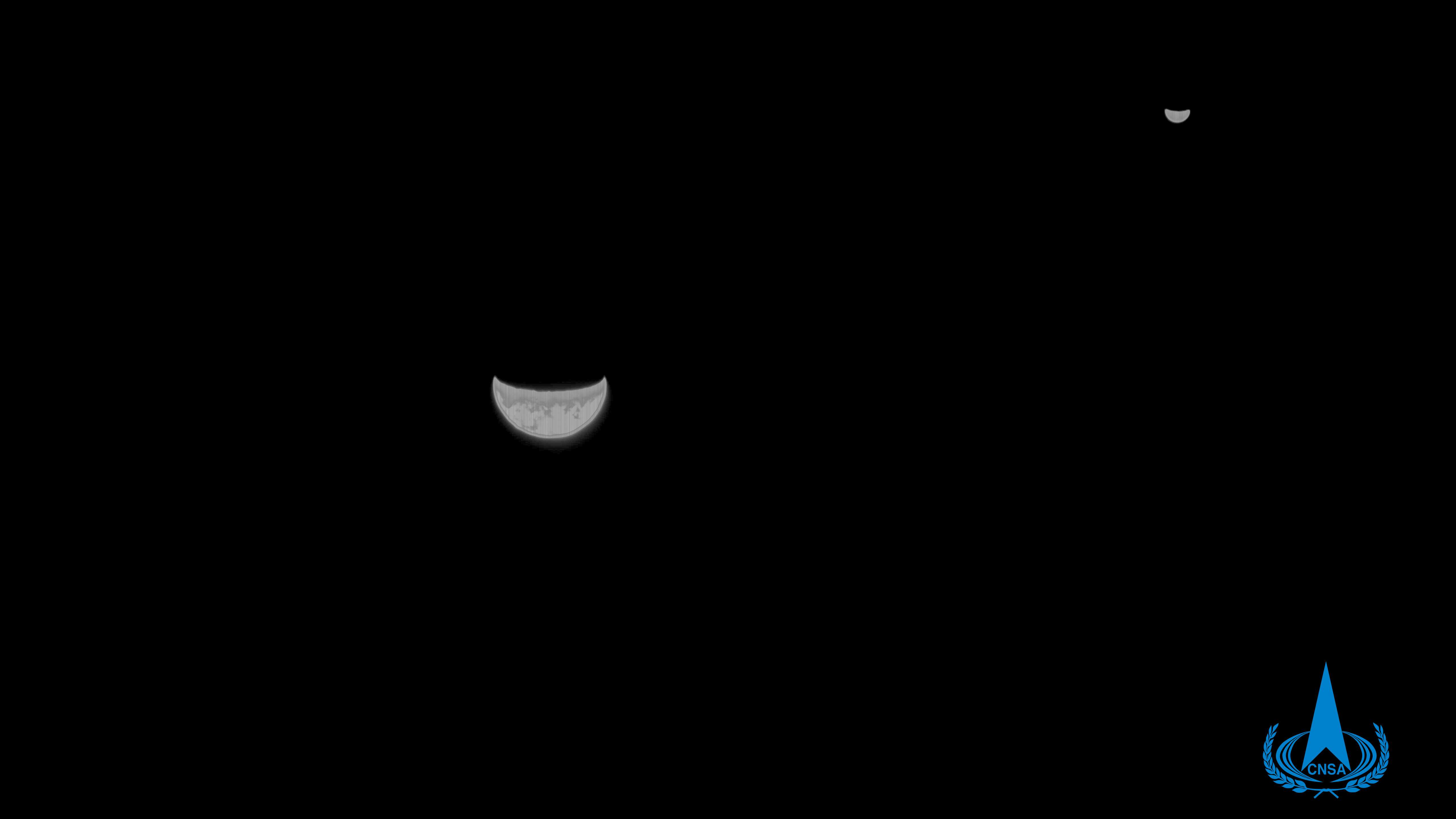
A photo of Earth and moon captured by China's Tianwen-1 probe at a distance of 1.2 million kilometers away. /China National Space Agency
A photo of Earth and moon captured by China's Tianwen-1 probe at a distance of 1.2 million kilometers away. /China National Space Agency
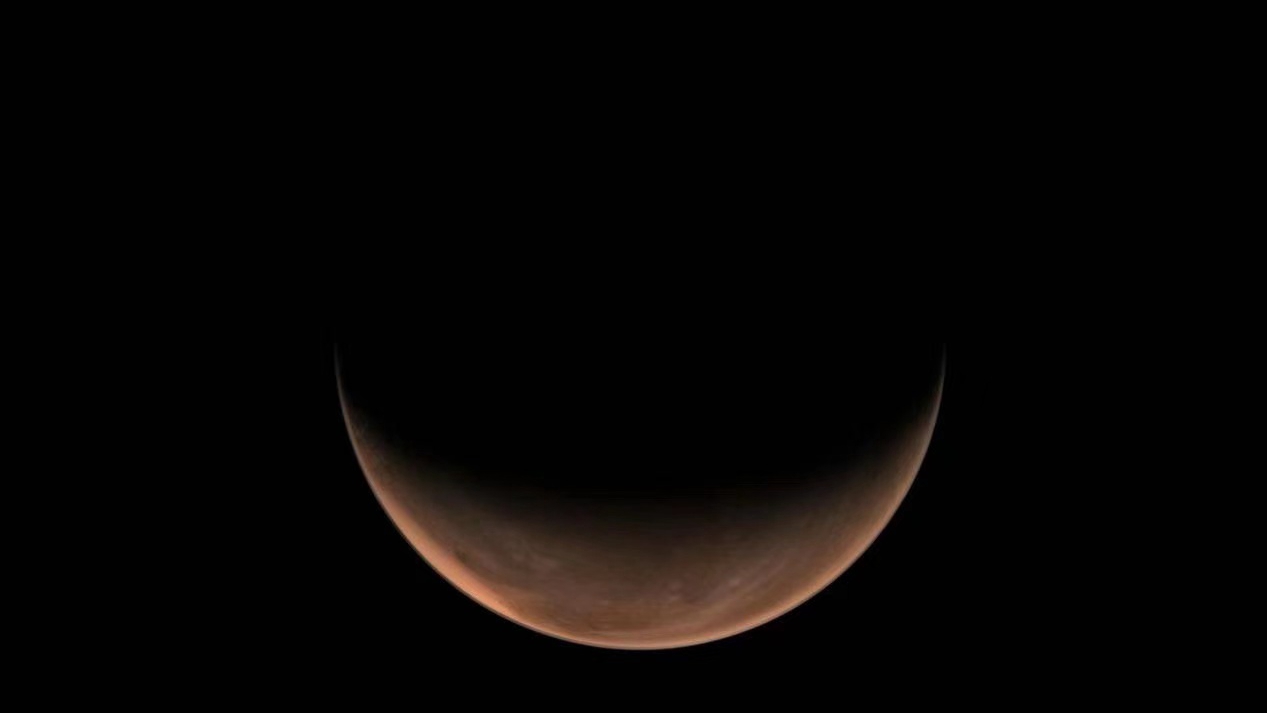
A side image of Mars taken by China's Tianwen-1 probe, showing the planet like a crescent. /China National Space Agency
A side image of Mars taken by China's Tianwen-1 probe, showing the planet like a crescent. /China National Space Agency
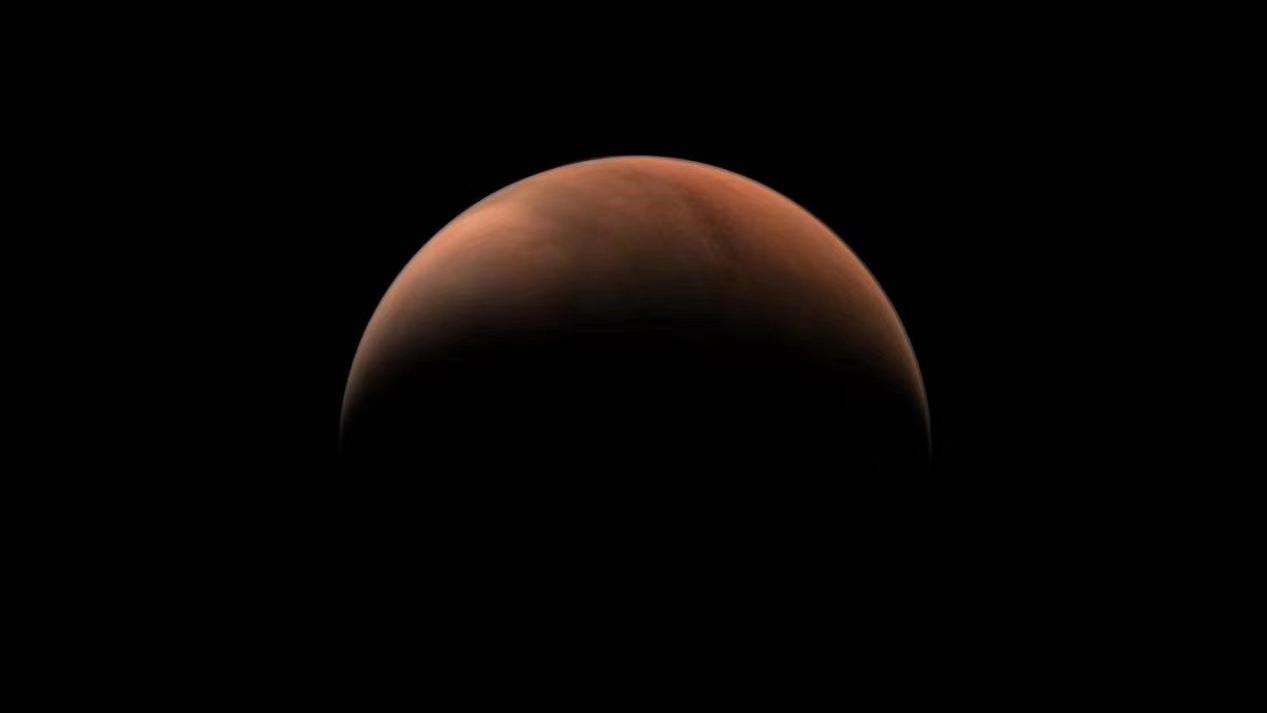
A side image of Mars taken by China's Tianwen-1 probe, showing the planet like a crescent. /China National Space Agency
A side image of Mars taken by China's Tianwen-1 probe, showing the planet like a crescent. /China National Space Agency
Zhang said the initial prototype development of Tianwen-2 probe has been completed, and it will be launched around May 2025, targeting at a near-Earth asteroid coded 2016 HO3. The mission is expected to retrieve samples and return from the asteroid.
"It will be the first time for China to retrieve samples from interplanetary bodies," said Zhang. "After completing this main task, we will strive to explore a main-belt comet."
The Tianwen-3 mission is going to retrieve samples back from Mars, and Tianwen-4 is to explore Jupiter and its system, said Zhang, adding that challenges in key technologies are to be overcome.